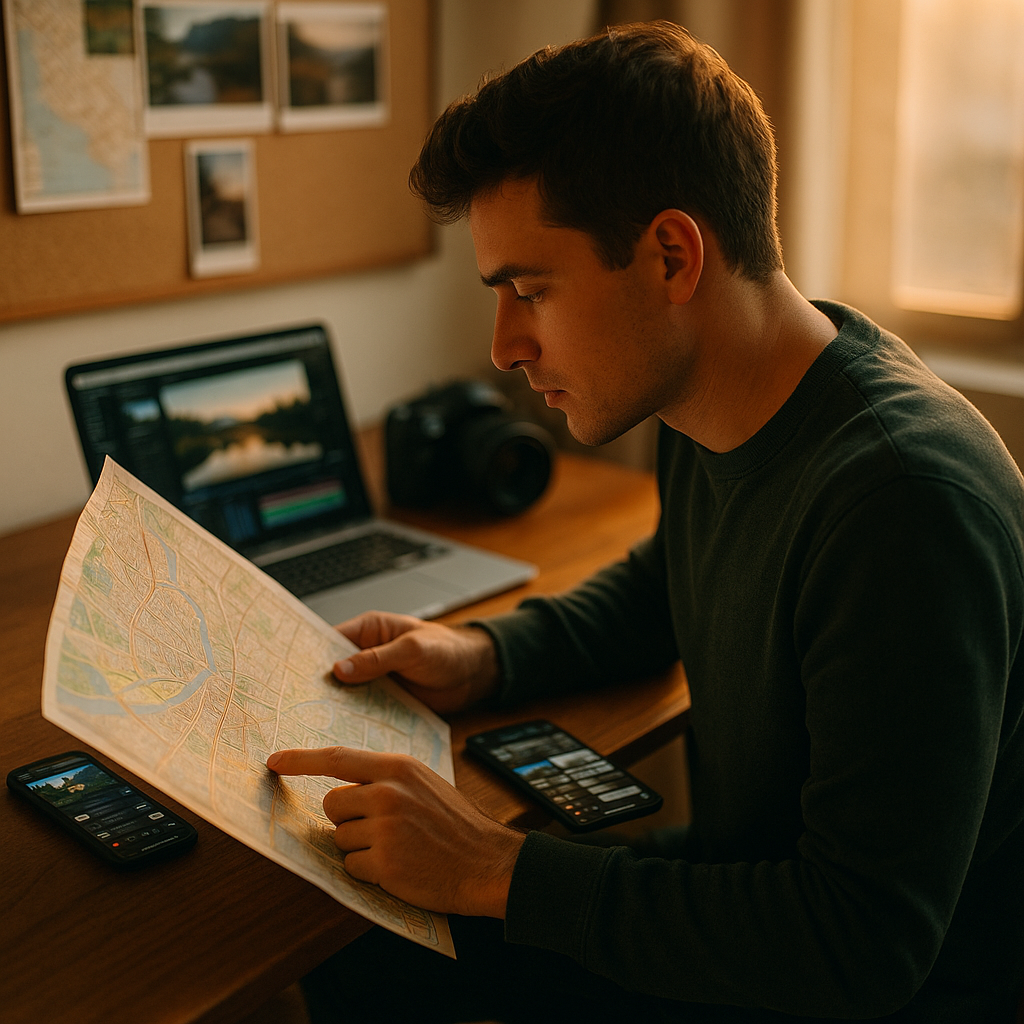The concept of the “psychogeography” of influence reveals how physical location shapes digital content in subtle but significant ways. From the view outside a creator’s window to timezone-driven posting rhythms, the spaces we occupy both limit and unleash new modes of online expression. Discover how your surroundings may already be guiding your digital presence in surprising ways.
Understanding Psychogeography in Digital Content Creation
Psychogeography, a term rooted in urban studies, explores how environments influence thoughts, feelings, and behaviors. When applied to digital content, it becomes the art and science of how physical spaces shape what—and how—we create online. As content moves fluidly across borders in 2025, the origin of its creation still subtly infuses every word, image, and video we consume. A city’s pace, the local culture, the weather, and even architecture can filter into online messaging, themes, and styles. Recognizing these influences helps both creators and audiences deepen their understanding of digital trends and authenticity.
The Impact of Geographic Location on Social Media Trends
Geographic location remains a key secondary keyword because it deeply affects content production and consumption. Social media platforms often amplify local trends into global phenomena; for instance, street fashion emerging in Seoul’s urban districts, or food hacks popularized in Lagos, have shaped international discussions overnight. In 2025, regional slang, celebrations, and even crises regularly become hashtags, reminding us how place-based realities can steer digital narratives. Creators rooted in specific cities or neighborhoods frequently act as cultural ambassadors, their surroundings reflected in everything from their background visuals to their humor and references, thus blending hyperlocal flavor into the global content stream.
Time Zone Influence: When and How Content Goes Viral
Time zone patterns exert a powerful but often overlooked influence on digital engagement. Posting from Sydney or San Francisco doesn’t just determine who sees your work first—it can dictate whether a post flops or goes viral. In an era of algorithmic feeds, timing intersects with audience habits shaped by local routines, work hours, and even holiday cycles. Creators who master this psychogeographic rhythm can maximize reach, while those who ignore it risk missing their audience entirely. Scheduling tools, geo-targeted analytics, and insights into peak activity now form a vital part of content strategy worldwide.
Local Infrastructure’s Role in Digital Creativity
The quality and availability of local infrastructure—another vital factor tied to physical environment—influence what creators can produce and how fast they can share it. In 2025, disparities in internet speed, access to creative spaces, or even access to natural scenery continue to generate distinctive content. For example:
- Rural creators may offer richer outdoor backdrops or document lifestyles unavailable in urban posts.
- Makers in hyper-connected tech hubs often experiment with the latest tools first, leading global visual trends.
- Areas with limited bandwidth may foster “low-fi” or minimalist styles that become popular elsewhere in response to their charm and authenticity.
Understanding these realities helps audiences appreciate the diversity and resourcefulness found in digital content worldwide.
Cultural Geography and Its Digital Footprint
Cultural geography is crucial in shaping digital storytelling. Traditions, values, and social norms influence which stories are told and how they resonate beyond their origin. In 2025, cross-cultural exchanges have accelerated, but globally viral content often contains nuances rooted deeply in place. Food bloggers in Bangkok may highlight local ingredients unknown in Europe; Quebecois podcasters inject French idioms that create both barriers and bridges for international listeners. Recognizing and respecting these embedded cultural hints not only enhances digital literacy but also drives more inclusive content creation and understanding.
Creating Locally-Inspired Content for a Global Audience
For creators hoping to achieve both authenticity and reach, weaving local psychogeographic elements into digital content is a powerful strategy. Successful influencers often balance:
- Personal narratives shaped by their immediate environment (such as favorite city spots or seasonal rituals).
- Universal themes—like humor, surprise, or human connection—that resonate globally.
- Careful translation and explanation of region-specific references to ensure accessibility across audiences.
By consciously leveraging the unique aspects of their location, content creators can offer fresh perspectives while providing the necessary context for international followers.
Conclusion: The Lasting Power of Place in a Digital Age
The “psychogeography” of influence reminds us that physical space still matters in the digital era. No matter how connected or virtual we become, location continues to shape our digital footprints. Understanding this gives creators an edge and audiences deeper insight—proving the power of place is more relevant than ever in today’s global content landscape.
FAQs: The Psychogeography of Influence and Digital Content
-
What is psychogeography in digital content?
Psychogeography explores how physical environments influence thought and behavior; when applied to digital content, it refers to how a creator’s location shapes the themes, style, and timing of online media.
-
How does physical location affect the success of social media posts?
Factors like time zone, local trends, and even infrastructure can determine when and how content gains traction, influencing its potential to go viral or resonate with specific audiences.
-
Why should creators consider their local environment when making content?
Embracing local influences can make content more authentic and relatable, allowing creators to stand out while also connecting global audiences to new perspectives.
-
Can digital content ever be truly “locationless”?
While some content feels universal, most digital creations are influenced by the creator’s culture, environment, and daily life, making true “locationless” content extremely rare.
-
How can global audiences better appreciate geographically influenced content?
Audiences can look for cultural cues, educate themselves about regional differences, and engage directly with creators to gain a richer understanding of the psychogeographic factors at play.
